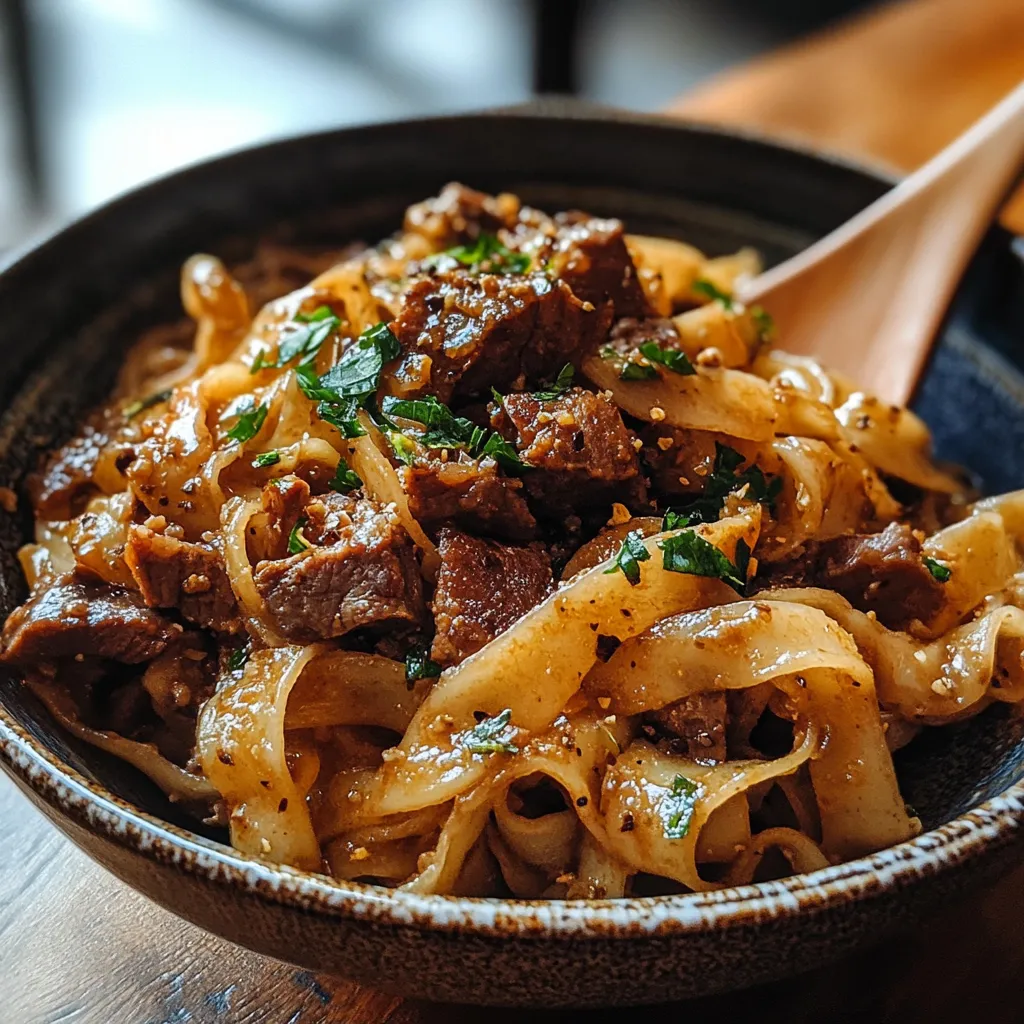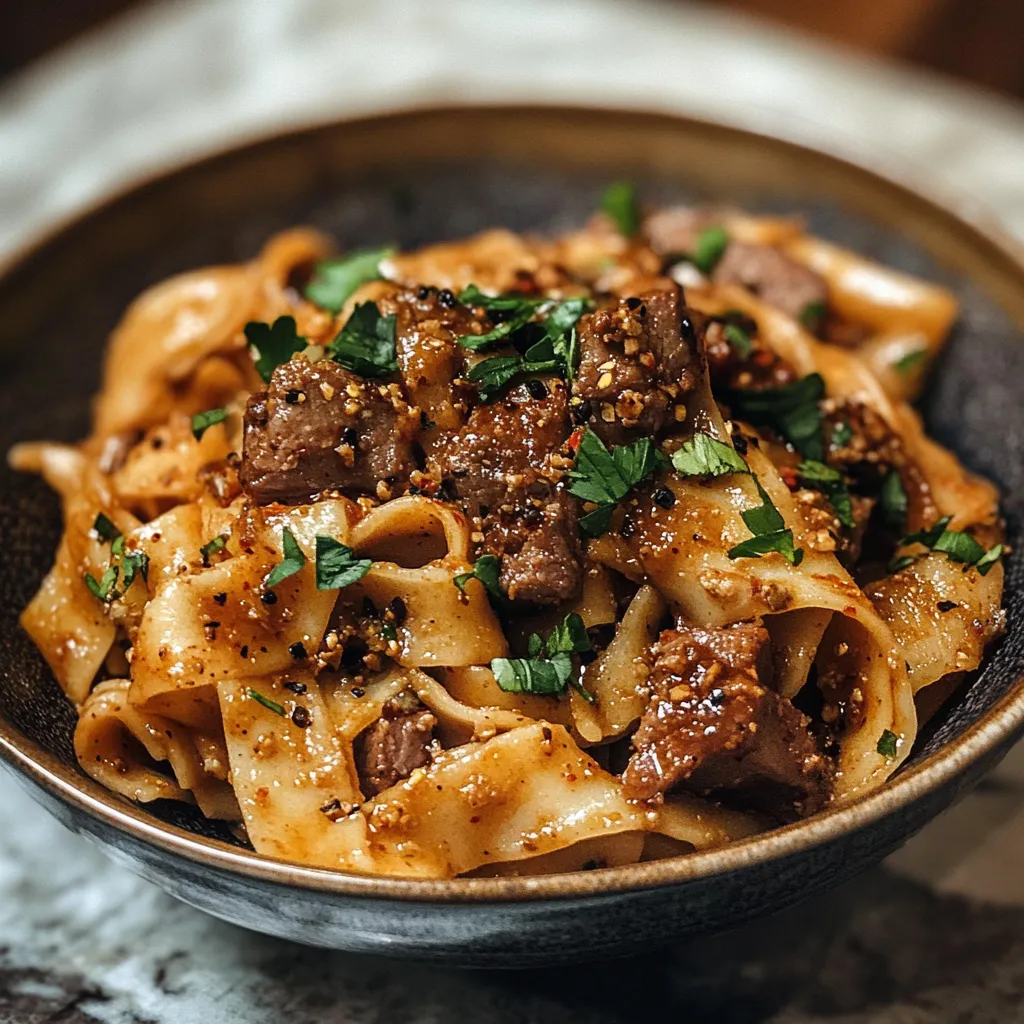 Pin
Pin
This hearty cumin lamb noodle dish brings authentic Chinese flavors straight to your dinner table with tender lamb, hand-pulled noodles, and a bold, aromatic sauce that will transport you to the streets of Xi'an. The contrast between the bouncy noodles and the fragrant lamb creates a truly memorable meal that's worth the extra effort.
I discovered this recipe during my quest to recreate the amazing cumin lamb noodles I had in northern China. After several attempts, this version consistently earns rave reviews when I serve it at dinner parties, with guests always requesting the recipe.
Ingredients
- Fresh lamb cuts preferably loin or shoulder for the perfect balance of tenderness and flavor
- Whole spices cumin seeds, Sichuan peppercorns, and coriander which create a much more fragrant base than pre-ground spices
- Homemade chili oil adds depth and complexity that store-bought versions simply cannot match
- Shaoxing wine brings an essential authentic flavor that enhances the meat's natural richness
- Hand-pulled noodles offer the perfect chewy texture that captures the sauce beautifully
Step-by-Step Instructions
- Prepare the Dough
- Begin by making your hand-pulled noodle dough ahead of time so it can rest properly. The dough needs to develop elasticity for proper stretching, and starting this first ensures your noodles will be ready to cook when the lamb is finished.
- Toast the Spices
- Heat cumin seeds, Sichuan peppercorns, and coriander in a dry pan over medium-low heat for about 5 minutes until fragrant and popping. This crucial step awakens the essential oils in the spices, transforming their flavor profile completely. Grind them to a coarse powder that will distribute evenly throughout the dish.
- Marinate the Lamb
- Combine thinly sliced lamb with wine, salt, oil, and some of your freshly ground spices, then coat with cornstarch. The cornstarch serves dual purposes, protecting the meat during the high-heat cooking and helping to thicken the final sauce. Allow the lamb to marinate for at least 15 minutes to absorb the flavors.
- Sear the Lamb
- Heat your skillet until smoking hot before adding the marinated lamb in a single layer. The high heat creates a beautiful caramelization that adds depth to the final dish. Add aromatic garlic and ginger on top, allowing them to gently cook in the rendering fat before stirring.
- Build the Sauce
- Add the red onion and chilis and quickly stir fry before incorporating the remaining spice mix. Work quickly as the spices can burn if left too long. Pour in the prepared sauce mixture, making sure to scrape up any caramelized bits from the bottom of the pan, which contain concentrated flavor.
- Cook the Noodles
- Boil your fresh hand-pulled noodles for just 1-2 minutes until they reach that perfect chewy consistency. Fresh noodles cook much faster than dried, so watch them carefully. The noodles should be slightly firm as they will continue to soften in the hot sauce.

The Sichuan peppercorns are what truly set this dish apart, providing that distinctive numbing sensation called "ma la" that pairs wonderfully with the heat of the chilis. I remember the first time I experienced this flavor combination and was completely captivated by how it transformed the lamb from simple to extraordinary.
Spice Management
The freshly toasted spices create the signature flavor of this dish. While you can substitute pre-ground spices in a pinch, the difference is substantial. Whole spices stay fresher longer and release more essential oils when freshly ground. If you find yourself making Chinese dishes regularly, investing in these whole spices will elevate all your cooking.
Noodle Options
While hand-pulled noodles create the most authentic experience, this dish works beautifully with other noodle varieties. Wide rice noodles offer a gluten-free alternative with a similar chewy texture. Udon noodles provide excellent sauce-clinging ability, while even standard spaghetti can work in a pinch. The key is choosing a noodle with enough substance to stand up to the robust sauce.
Regional Variations
This dish originates from Xinjiang province in northwest China, where the Muslim population has influenced the cuisine with cumin and lamb combinations not typically found in other Chinese cooking. Different regions adjust the spice level and accompanying vegetables. Southern variations often include more green vegetables, while northern versions tend to focus more intensely on the lamb and spices.
Balancing Heat Levels
The recipe calls for substantial chili oil, which might intimidate some home cooks. Start with half the recommended amount if you're sensitive to heat. The beauty of this dish lies in finding your personal balance between the numbing Sichuan peppercorns and the hot chili oil. Remember that the noodles will temper the overall spiciness, spreading the heat throughout the dish.
Common Questions About This Recipe
- → Can I use store-bought noodles instead of making hand-pulled noodles?
Yes, you can substitute wide wheat noodles from the store. The recipe specifically mentions this as an alternative in the ingredients list. Look for udon, thick wheat noodles, or even wide rice noodles as suitable replacements.
- → What cuts of lamb work best for this dish?
Well-marbled cuts like lamb loin or shoulder work best for this dish. These cuts provide the right balance of tenderness and flavor. Make sure to slice the meat thinly against the grain for the most tender result.
- → How spicy is this dish and can I adjust the heat level?
The dish has moderate to high heat depending on how much chili oil you use. You can easily adjust the spiciness by reducing the chili oil to 1/4 cup (as mentioned in footnote 3) or adding more to taste. The green chilis also contribute to the heat level, so you can reduce or omit those for a milder version.
- → What substitutions can I make if I don't have Shaoxing wine?
Dry sherry is the best substitute for Shaoxing wine, as mentioned in the recipe. If you need a non-alcoholic option, you can use chicken broth with a touch of rice vinegar, though this will alter the flavor profile slightly.
- → Can I prepare any components of this dish ahead of time?
Yes, you can prepare several components ahead: toast and grind the spice mix up to a week in advance (store in an airtight container), marinate the lamb for up to 24 hours in the refrigerator, and make the chili oil days or even weeks ahead. This will significantly reduce the preparation time when you're ready to cook.
- → What can I substitute for lamb if I don't eat it?
Beef (particularly skirt or flank steak) makes an excellent substitute for lamb in this recipe. For a poultry option, boneless chicken thighs work well. For vegetarians, firm tofu or seitan can be used, though you may want to adjust the marinating time and cooking process slightly.
